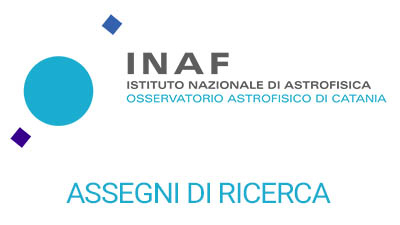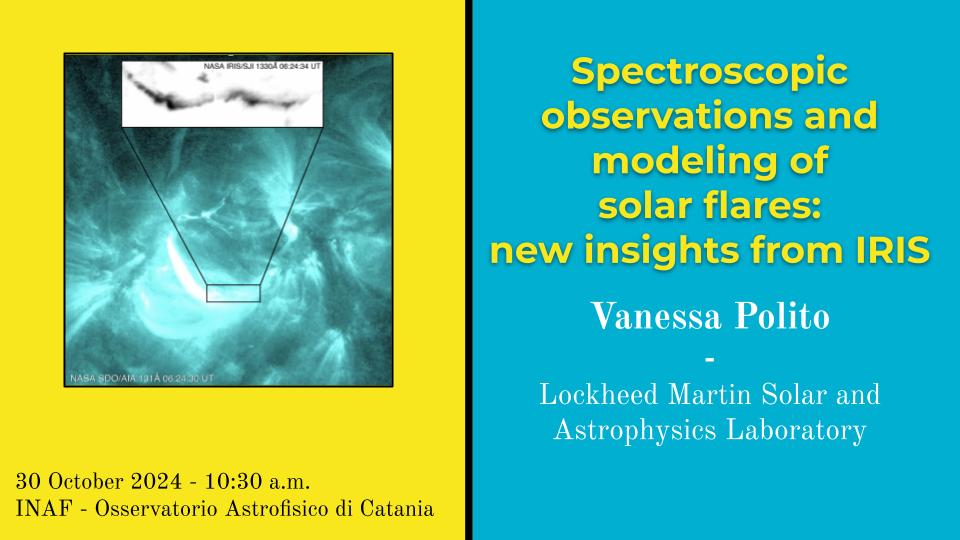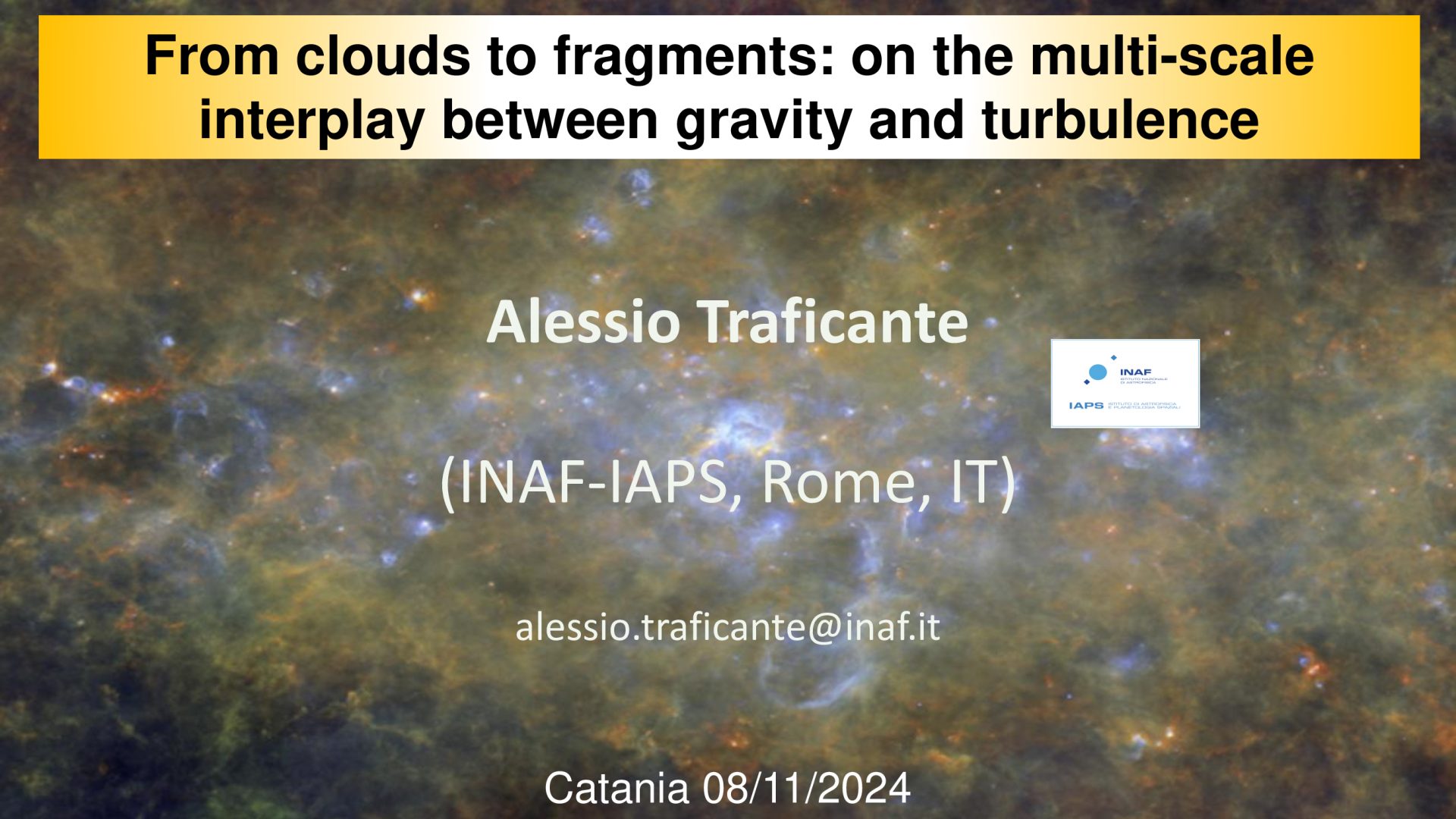Pubblica selezione per titoli e colloquio per il conferimento di un assegno di ricerca di professionalizzazione, della durata di 12 mesi, eventualmente prorogabili, dal titolo “Sviluppo di tecniche di Visual Analytics e Machine Learning per il Progetto SKAVA”, nell’ambito del progetto SKAVA: SKA Visual Analytics Bando Allegato A Allegato B Determina di nomina della commissione […]
Calendario di Eventi
|
L
Lun
|
M
Mar
|
M
Mer
|
G
Gio
|
V
Ven
|
S
Sab
|
D
Dom
|
|---|---|---|---|---|---|---|
|
1 evento,
|
2 eventi,
-
Recent high-resolution observations from the IRIS satellites have enabled significant advancements in our understanding of the physical mechanisms at play during the impulsive phase of flares, including details of how the non-thermal energy is released and propagated from the corona to the low-atmosphere through accelerated particles. At the same time, the new discoveries have brought to light new unsolved questions and challenges for current models. This talk will provide some examples of the unique contributions to our understanding of flares from IRIS, also in coordination with other solar observatories, and how state-of-the-art heating models of flares can be constrained by the available imaging and spectral diagnostics. I will also discuss some of the outstanding problems in preparation for the next generation of solar missions. |
|||||
|
2 eventi,
The star formation mechanism occurs in well defined structures that can be identified and studied in great details in our own Galaxy: the process starts in giant molecular clouds, objects extended up to several tens of parsecs, within which elongated sub-structures, called filaments, may form. Inside filaments, round-like condensations extended up to ~1pc in radius, the so-called clumps, are the natural birth site of the pre- and proto- stellar fragments, inside which will origin the future stars. |
||||||
|
0 eventi,
|
0 eventi,
|
|||||
|
0 eventi,
|
0 eventi,
|
0 eventi,
|
0 eventi,
|
0 eventi,
|
0 eventi,
|
0 eventi,
|


